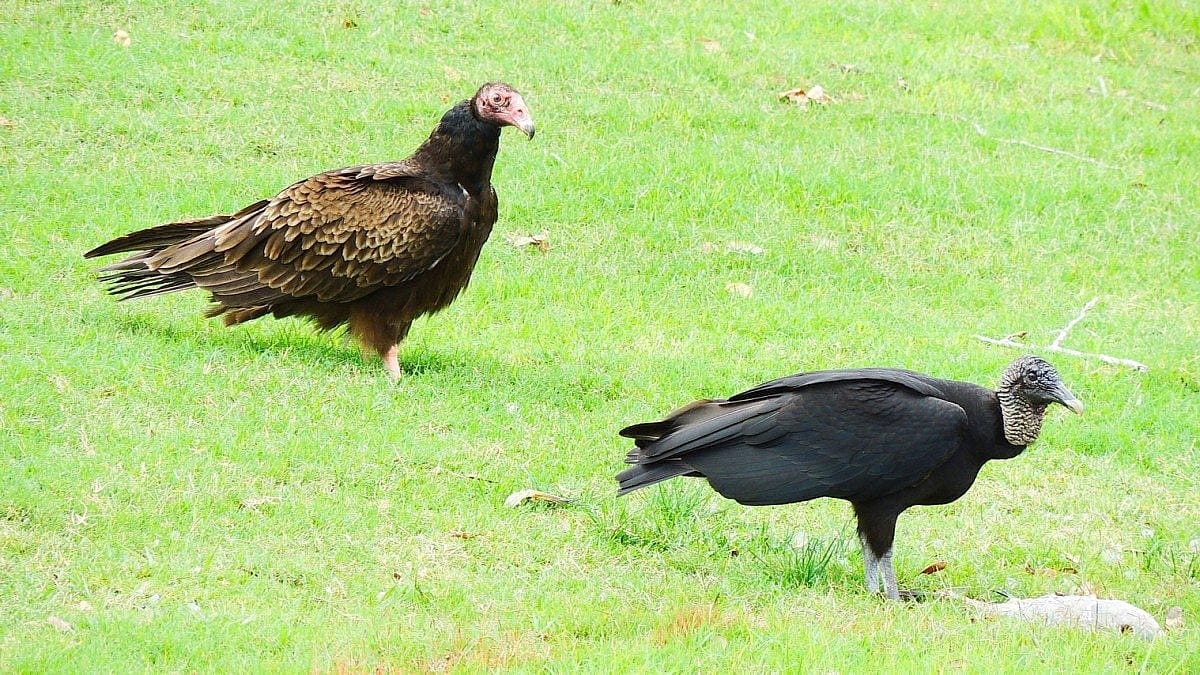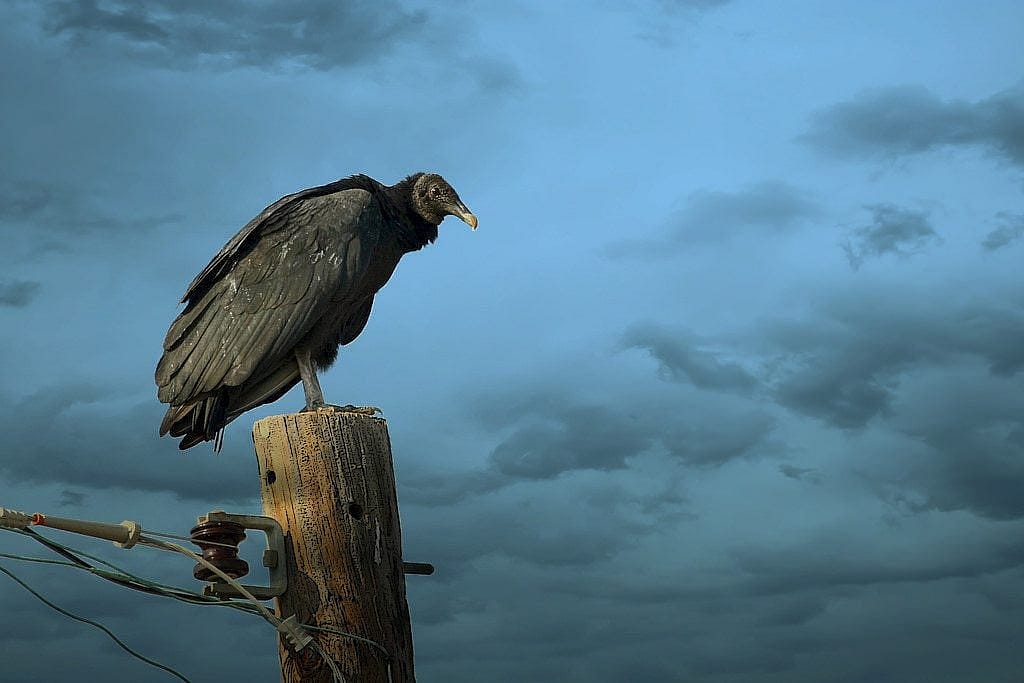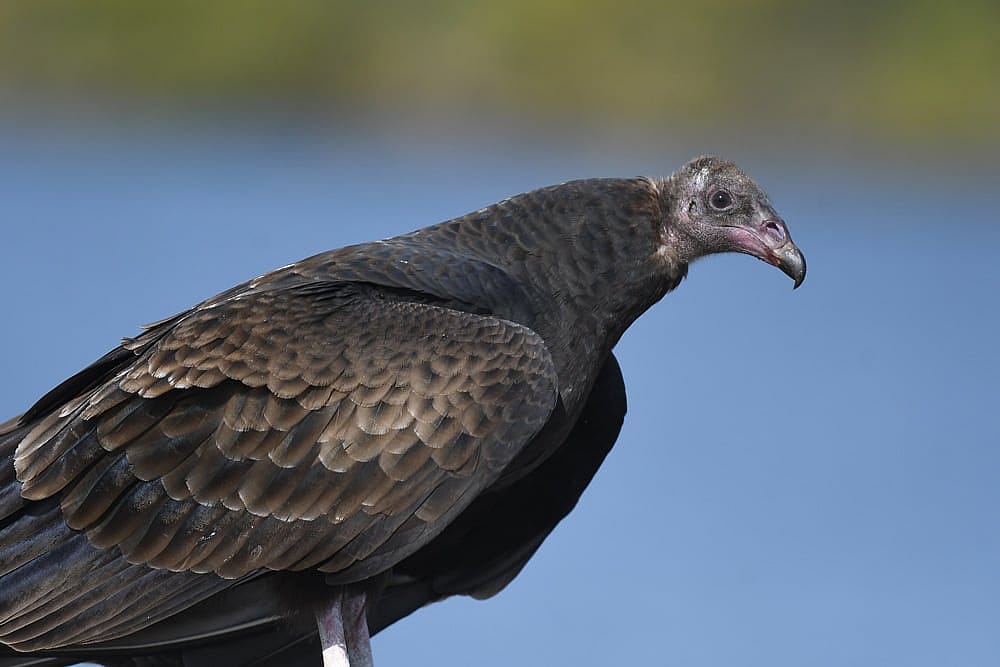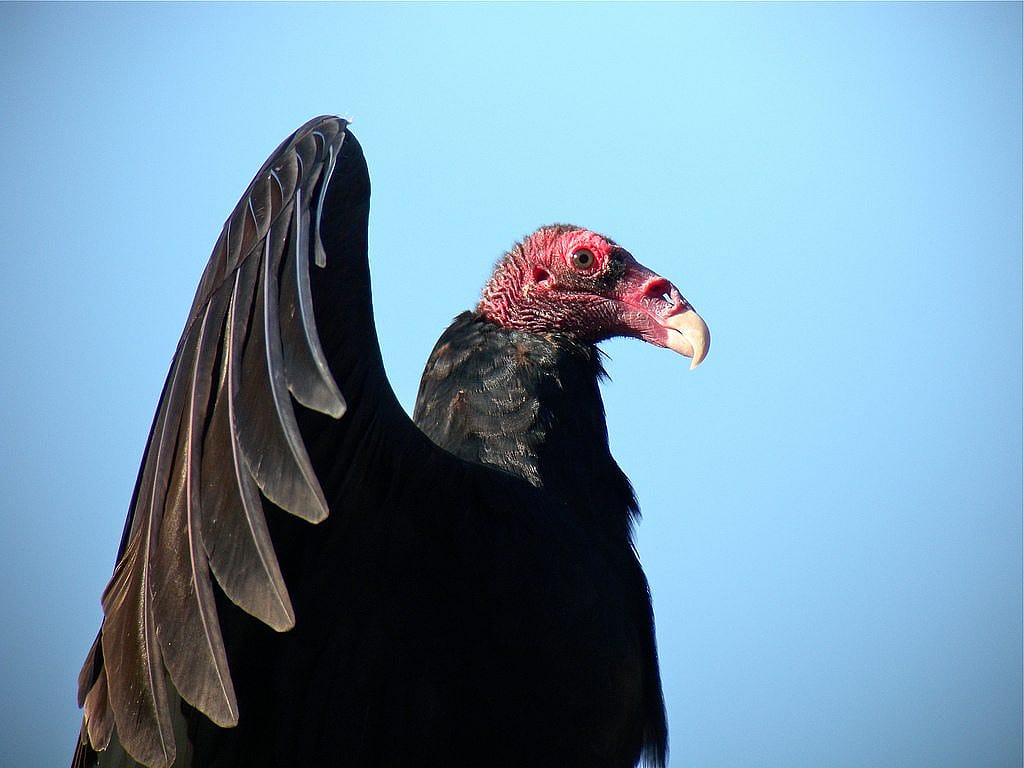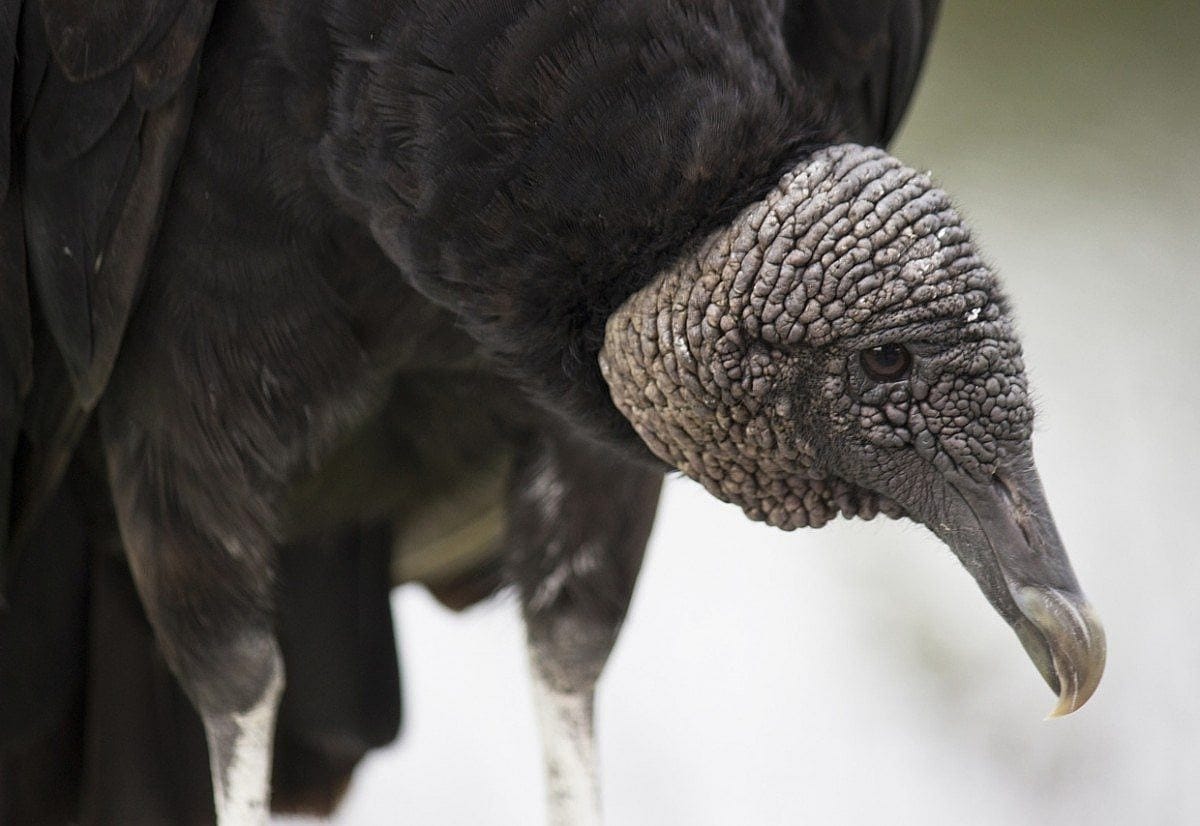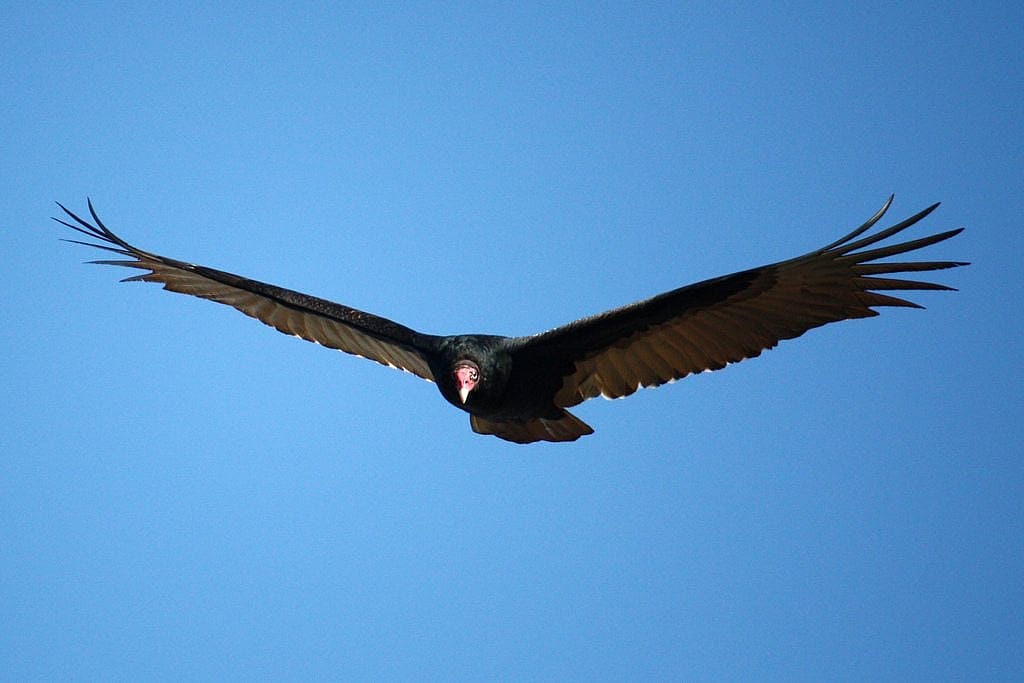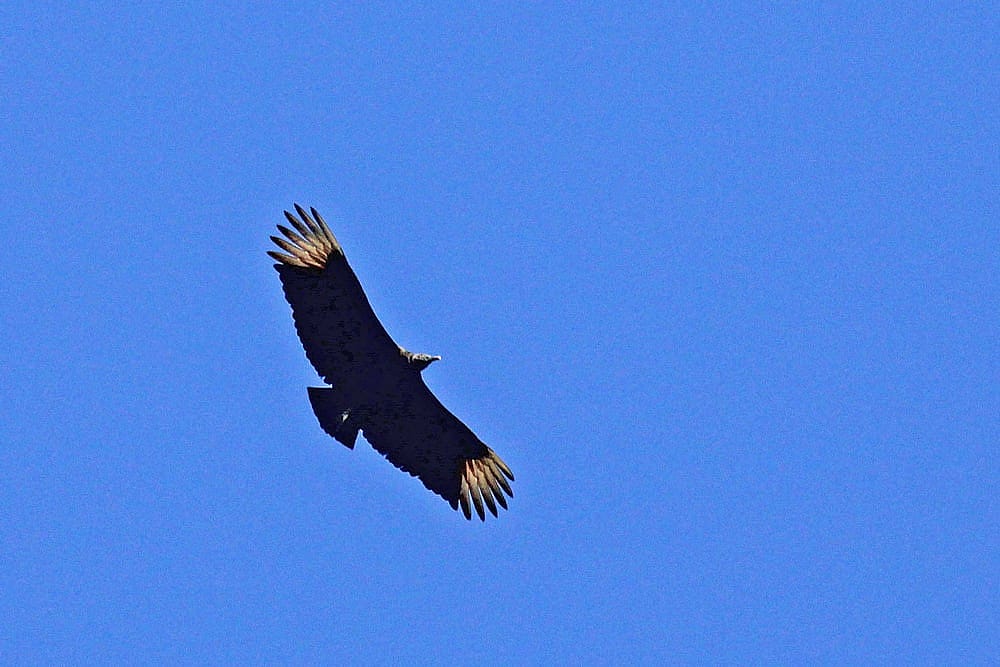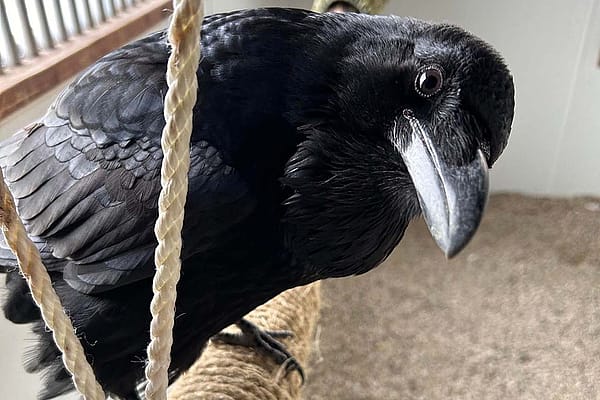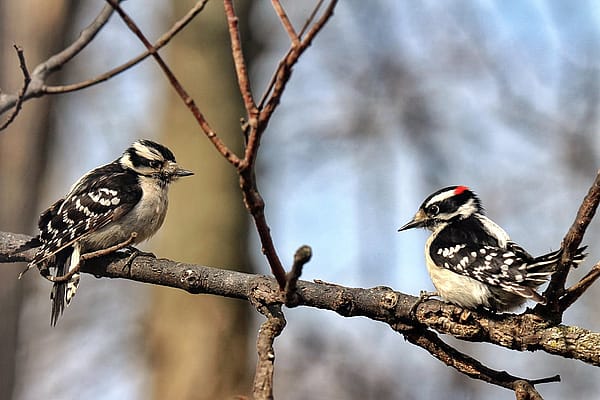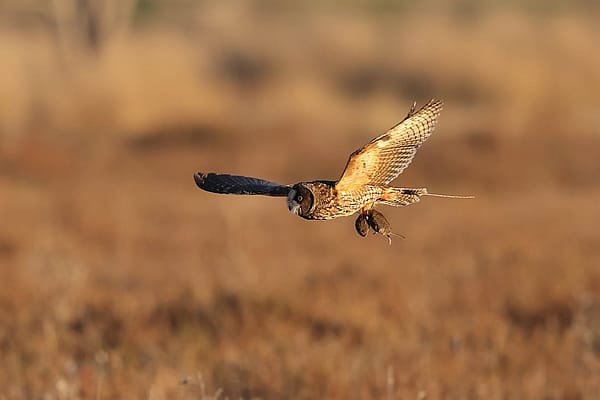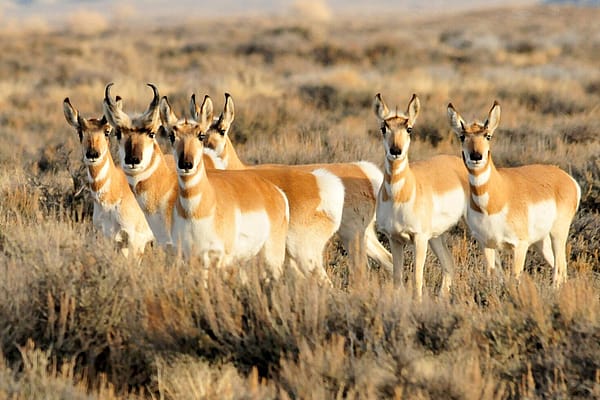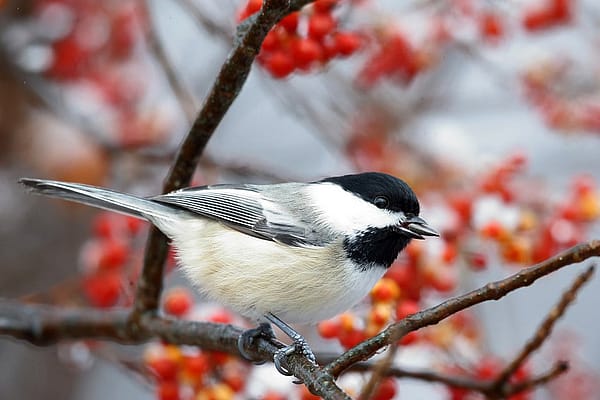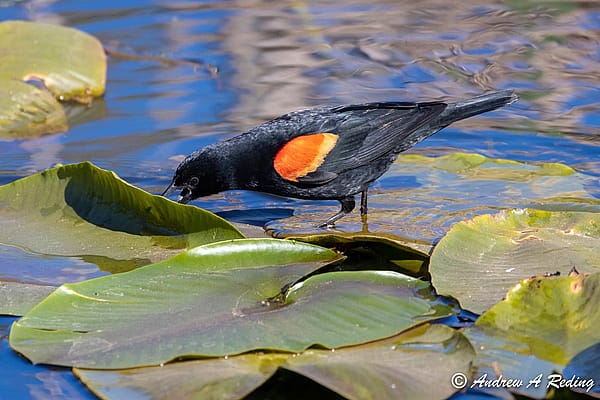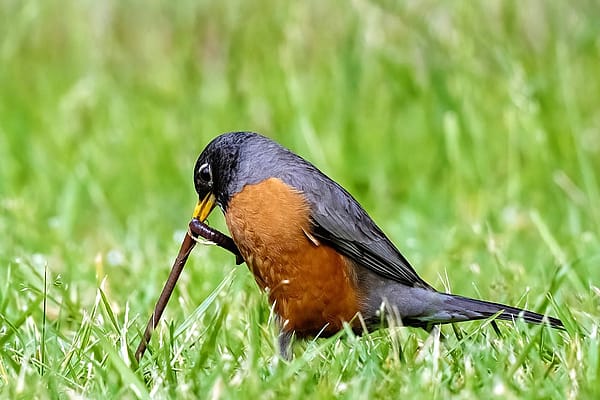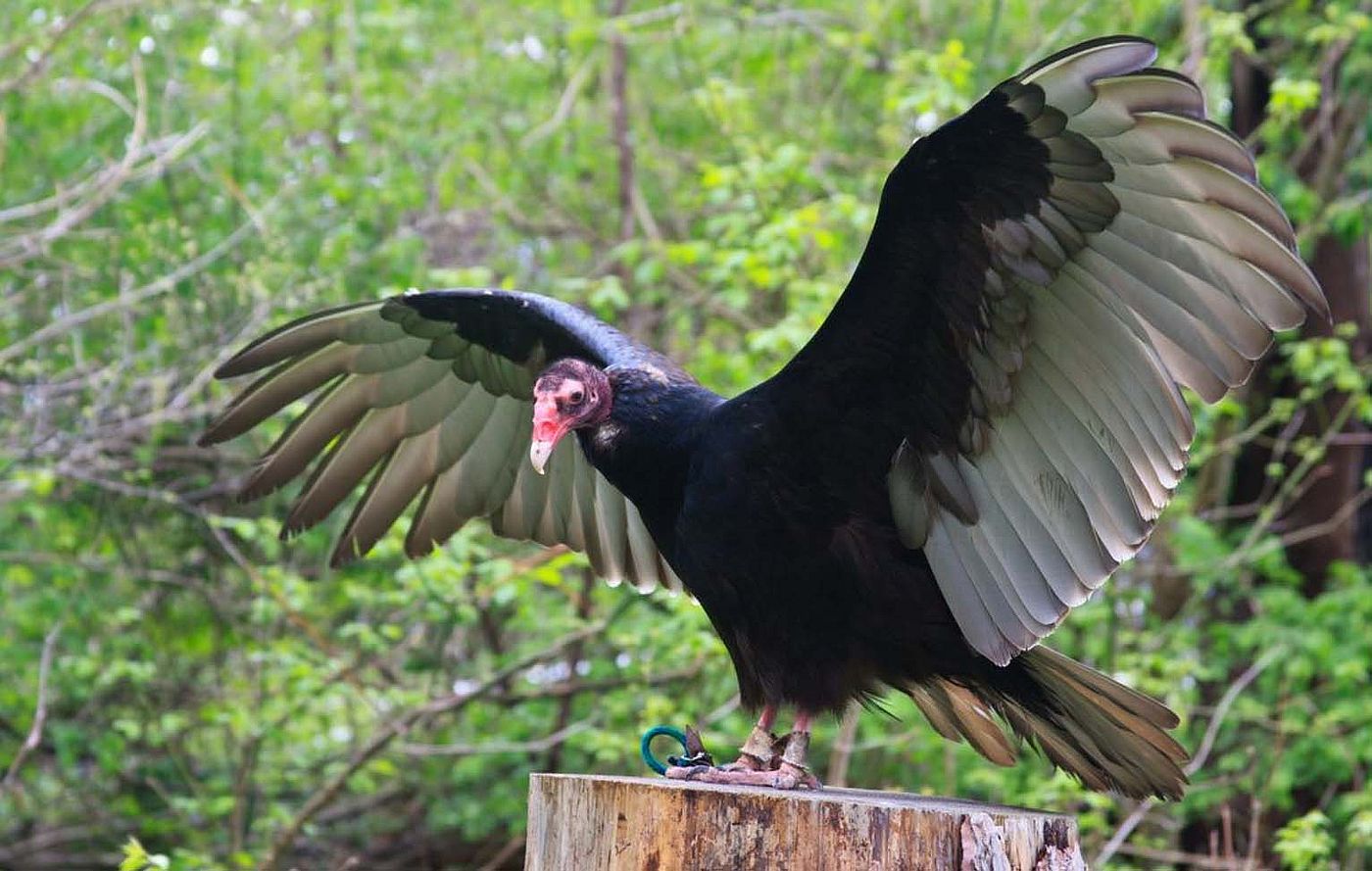
Turkey Vultures or Black Vultures?
What kind of a vulture is that? If you are in the Cody area, you know it’s a Turkey Vulture. Turkey vultures are the only vulture that migrates to Wyoming for the warmer months, where they help keep our environment clean and disease free by dining on dead animals. In the southern parts of our country, and more recently New England, there are both Turkey Vultures and Black Vultures.
Both vultures almost exclusively depend on carrion. Turkey Vultures rarely attack living prey, and when they do it’s something small and helpless. The Black Vulture will occasionally kill skunks, opossums, night-herons, leatherback turtle hatchlings, and livestock – including young pigs, lambs, and calves. (Ref. Cornell Lab of Ornithology’s All About Birds Web page.)
Turkey Vultures have an excellent sense of smell, and may be able to smell the gasses rising off of a carcass from 5-miles away. Black Vultures lack this ability, though they have learned to take advantage of the Turkey Vulture’s sense of smell. To locate food Black Vultures may soar high, looking for food with its excellent vision, as well as keeping an eye on Turkey Vultures. If a soaring Turkey Vulture smells a delicious meal, the Black Vultures will simply follow the Turkey Vulture as it descends down to the carcass. Turkey Vultures are more solitary when hunting than Black Vultures and often hunt alone or in small groups. Black Vultures, however, will often hunt in larger groups. Being more aggressive birds, a large group of Black Vultures can easily take over a carcass from a solitary, or a small group of Turkey Vultures. If, however, there is one of each type of vulture on the carcass, the Black Vulture will usually lose out to the slightly larger Turkey Vulture.
If you live or visit an area where both types of vultures reside, identifying them may be confusing. If you are looking at a perched adult, it is easy. The Turkey Vulture has a red head, while the Black Vulture has a black or dark gray head.
The bill of an adult Turkey Vulture will be white, while the Black Vulture has a dark bill with bone colored tips. When seen up close, the feathers of Black Vultures are a sooty black, while a Turkey Vulture’s dark feathers also include dark brown. This plumage difference will be very helpful if the bird you are observing is immature. Turkey Vultures less than a year old have dark gray heads and dark bills, similar to a Black Vulture.
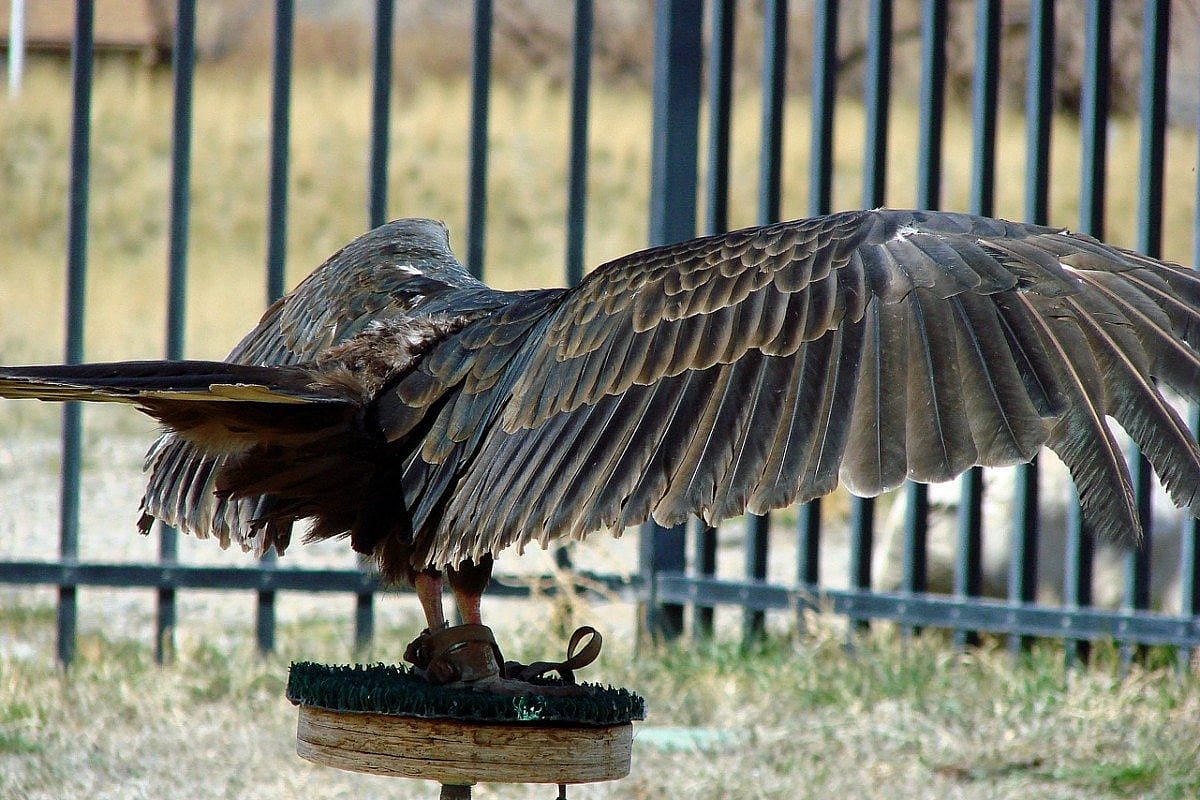
In flight, if seen as a silhouette, there are a few characteristics that may help you. Black Vultures have shorter tails, with their tails ending near the tips of their toes. They also tend to soar with their wings held almost flat. A Turkey Vulture, on the other hand, generally holds its wings in a dihedral position (shallow “V” shape). Turkey vultures also teeter back and forth as they soar. The flight pattern also varies among the two species. A Turkey Vulture will soar for long periods of time – possibly up to 6 hours – without flapping its wings. When they do flap, the wing beats are slow, perhaps only 1 flap per second. Black Vultures flap more frequently and quickly. When soaring, the Black Vultures do not teeter back and forth as the Turkey Vulture does.
From a distance, the body feathers of both birds look black. However, if observed in good light conditions, looking at the underside of the open wings will give you an easy, sure way to identify these birds. The silvery or whitish gray wingtips (fingers) and flight feathers give the Turkey Vulture a two-toned appearance. Although less noticeable, the tail also sports this silvery gray on its underside. The Black Vultures are mostly dark in color except for white patches on the wingtips, sometimes called “stars.” Think of the Black Vulture as dressed in black evening wear with white gloves on its hands.
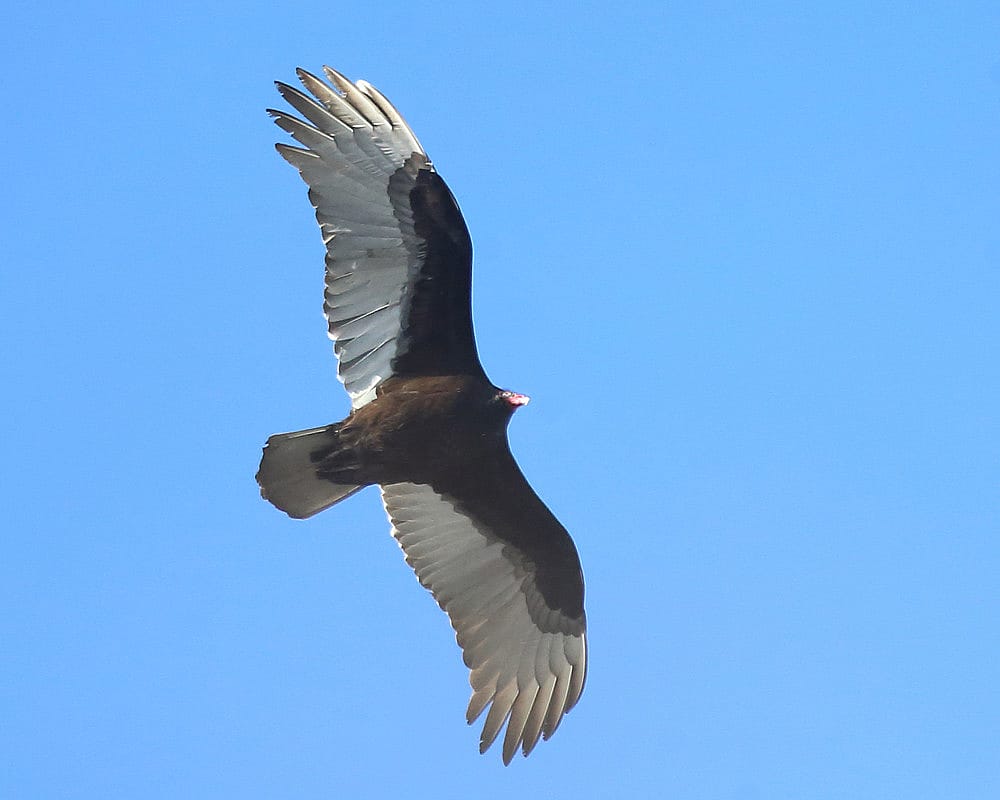
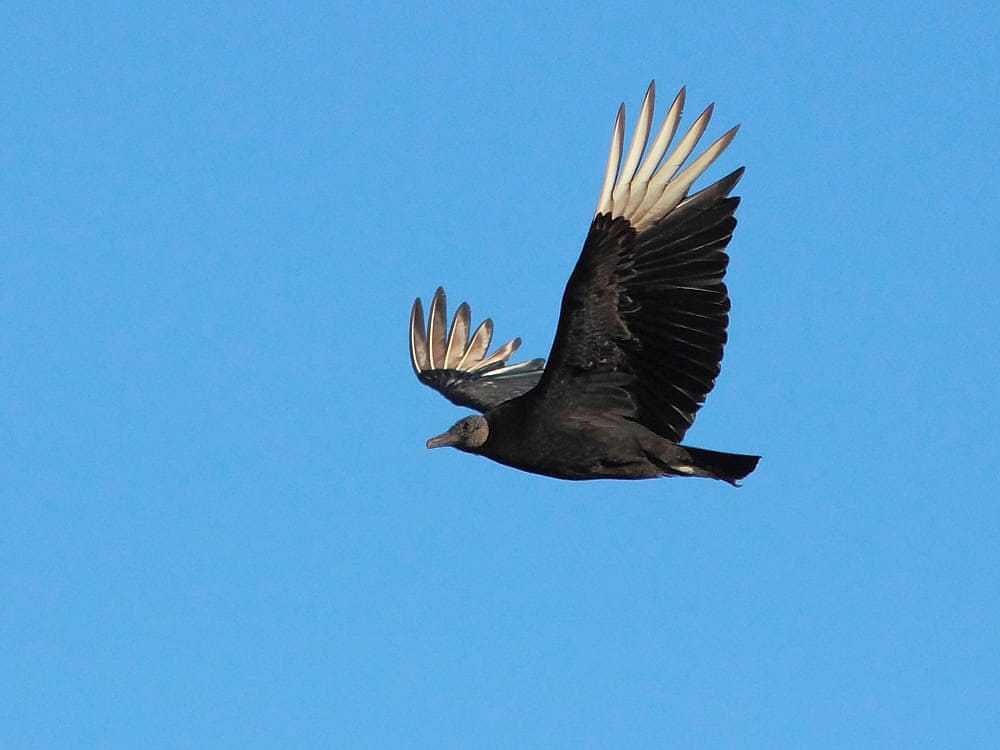
If you have vultures in your area, look to the skies and enjoy the beauty of these birds as they move about. And remember, without the vultures, reeking carcasses would linger longer, insect populations such as flies would increase, and diseases would spread.
Photo Credits:
Black and Turkey Vultures by Jim Mullhaupt, NonCommercial, NoDerivatives license, https://www.flickr.com/photos/jimpic
Black Vulture Perched , by TexasEagle, Attribution NonCommercial License, https://www.flickr.com/photos/texaseagle
First year Turkey vulture, by Andy & Crissy McClarren, Attribution 2.0 Generic License, https://www.flickr.com/photos/wildreturn/
Turkey Vulture’s head by Len Blumin, Attribution, NonCommercial, NoDerivatives license, https://www.flickr.com/photos/lenblumin
Black Vulture head by Dennis Church, Attribution, NonCommercial, NoDerivatives license, https://www.flickr.com/photos/dfc_pcola
Turkey Vulture in flight, by Jay, Attribution License, https://www.flickr.com/photos/jaybock
Black Vulture in flight with wide flat wings by Mary Keim, Attribution-NonCommercial-ShareAlike 2.0 Generic license, https://www.flickr.com/photos/38514062@N03/
Turkey Vulture in Flight by Tom Murray, Attribution-NonCommercial 2.0 Generic License, https://www.flickr.com/photos/tmurray74/
Black Vulture in flight showing both sides of wings, by Kenneth Cole Schneider, Attribution-NoDerivs 2.0 Generic license, https://www.flickr.com/photos/rosyfinch/
Written By
Anne Hay
Anne Hay has a Bachelor's degree in Elementary Education and a Master's in Computers in Education. She spent most of her working years teaching third grade at Livingston School in Cody, Wyoming. After retiring she began doing a variety of volunteer work for the Buffalo Bill Center of the West’s Draper Natural History Museum. Anne loves nature and has a concern for the environment. She believes that educating the public, so that they will have a better understanding and appreciation for the natural world, is very important. Because of this belief, volunteering at the Center is a perfect fit. She spends time in the Draper Lab, observing eagle nests for Dr. Charles Preston’s long-term research project on nesting golden eagles, writing observation reports of raptor sightings in the Bighorn Basin, and working with the Draper Museum Raptor Experience. Anne states that, “Having a bird on my glove, is one of my all time favorite things in life.”
